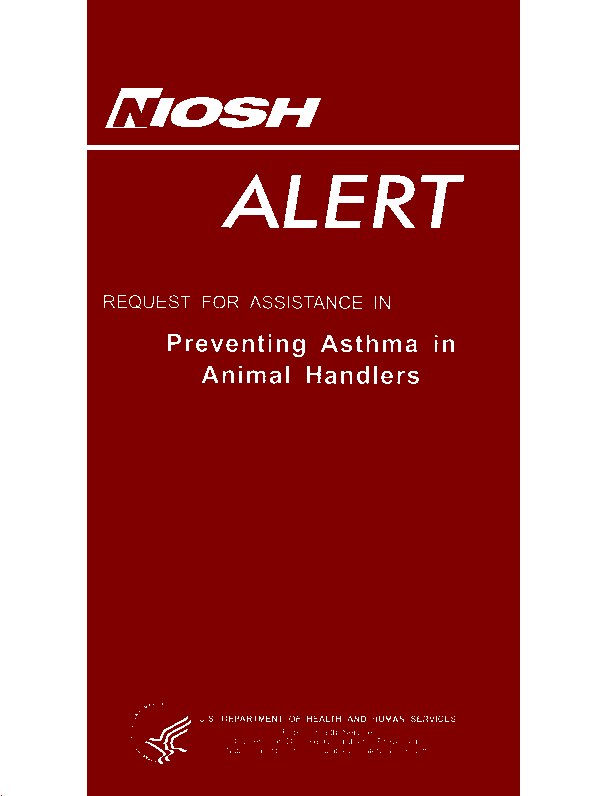Preventing Asthma in Animal Handlers
January 1998
DHHS (NIOSH) Publication Number 97-116

Appendix
NIOSH Surveillance Guidelines for State Health Departments: Occupational Asthma*,†
Reporting Guidelines
State health departments should encourage providers to report all suspected or diagnosed cases of occupational asthma. These should include persons with
A. A physician's diagnosis of asthma
AND
B. An association between symptoms of asthma and work.
State health departments should collect appropriate clinical, epidemiologic, and workplace information about reported cases to set priorities for workplace investigations.
Surveillance Case Definition
A. A physician's diagnosis of asthma
AND
B. An association between symptoms of asthma and work and any one of the following:
1. Workplace exposure to an agent or process previously associated with occupational asthma,
OR
2. Significant work-related changes in forced expiratory volume in 1 second (FEV1) or peak expiratory flow rate (PEFR),
OR
3. Significant work-related changes in airway responsiveness as measured by nonspecific inhalation challenge,
OR
4. Positive response to inhalation provocation testing with an agent to which the patient is exposed at work. Inhalation provocation testing with workplace substances is potentially dangerous and should be performed by experienced personnel in a hospital setting where resuscitation facilities are available and where frequent observations can be made over sufficient time to monitor for delayed reactions.
*Asthma is a chronic inflammatory disorder of the airways in which many cells and cellular elements play a role. In susceptible individuals, this inflammation causes recurrent episodes of wheezing, breathlessness, chest tightness, and coughing, particularly at night or in the early morning. These episodes are usually associated with widespread but variable airflow obstruction that is often reversible, either spontaneously or with treatment. This inflammation also causes an associated increase in the existing bronchial hyperresponsiveness to a variety of stimuli [NHLBI 1995]. This hyperresponsiveness may be demonstrated by significant changes in the forced expiratory volume in 1 second (FEV1) or peak expiratory flow rate (PEFR). Airflow changes can occur spontaneously with treatment, with a precipitating exposure, or with diagnostic maneuvers such as nonspecific inhalation challenge.
Patterns of association can vary. The following examples are patterns that may suggest an occupational etiology:
- Symptoms of asthma develop after a worker starts a new job or after new materials are introduced on a job (a substantial period of time may elapse between initial exposure and development of symptoms).
- Symptoms develop within minutes of specific activities or exposures at work.
- Delayed symptoms occur several hours after exposure, during the evenings of workdays.
- Symptoms occur less frequently or not at all on days away from work and on vacations.
- Symptoms occur more frequently on returning to work.
Work-related changes in medication requirements may have similar patterns, also suggesting an occupational etiology.
Many agents and processes have been associated with occupational asthma [Chan-Yeung and Malo 1994; Salvaggio et al. 1986], and others continue to be recognized. Changes in nonspecific bronchial hyperactivity can be measured by serial inhalation challenge testing with methacholine or histamine. Increased bronchial reactivity (manifested by reaction to lower concentrations of methacholine or histamine) following exposure and decreased bronchial reactivity after a period away from work are evidence of work-relatedness.
†Reprinted from CDC [1990], p. 43.
- Page last reviewed: June 6, 2014
- Page last updated: June 6, 2014
- Content source:


 ShareCompartir
ShareCompartir